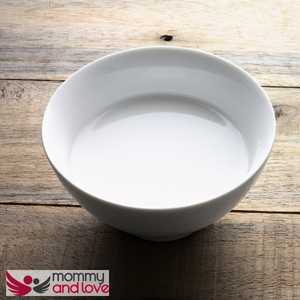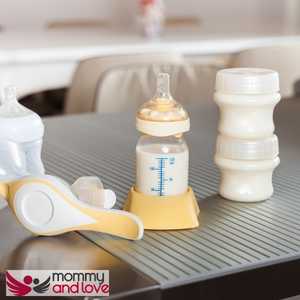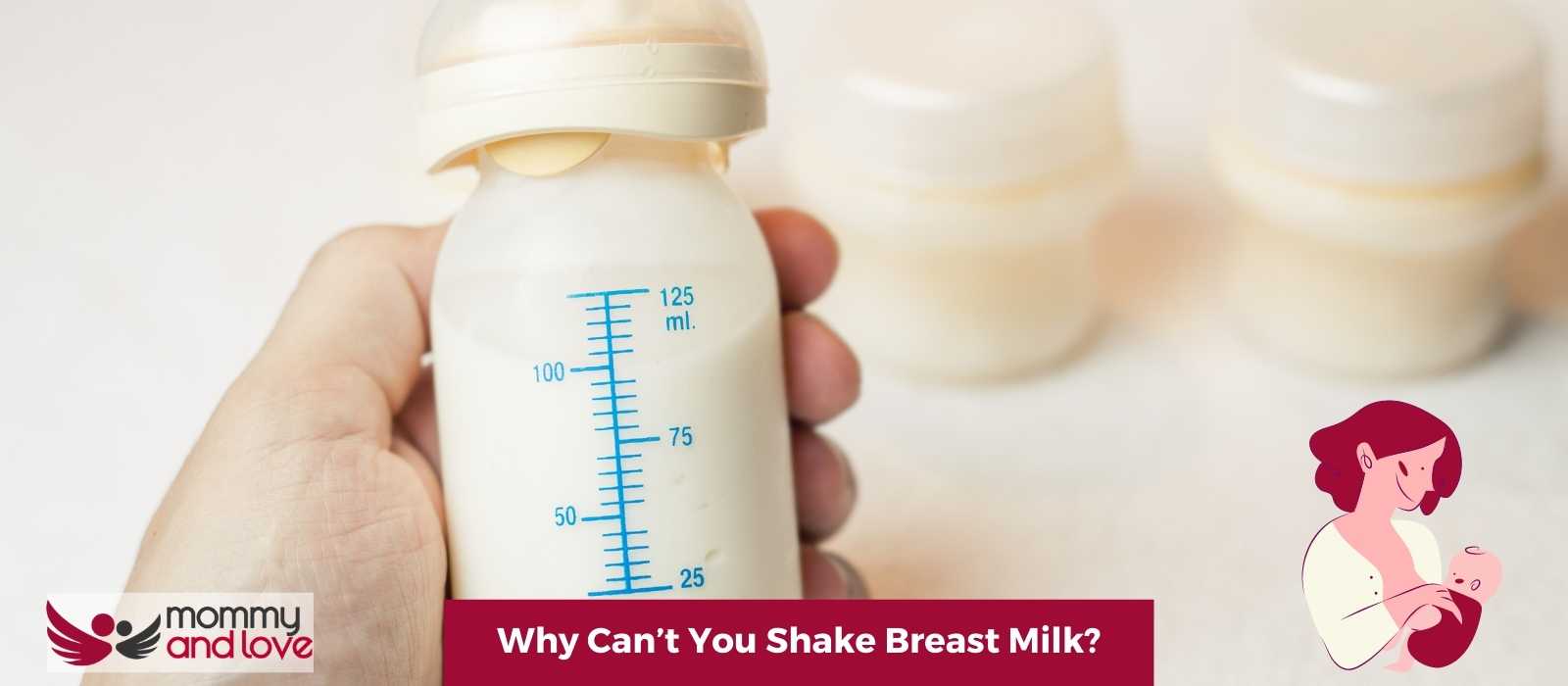Breast milk is an amazing source of nutrition for newborns and infants, but why can’t you shake it like other types of milk?
Because vigorous shaking of breast milk breaks down protein molecules, exposing your baby’s gut to infections and gut lining inflammation. Also, denatured proteins won’t properly perform their intended function. This is the main reason why shaking can damage breast milk.
In this blog post, we will discuss why it’s common yet surprisingly strict advice given to many mothers to swirl, not shake. We will also provide tips on how to properly store and handle freshly expressed milk.
Is Shaking Breast Milk Bad?
You may have heard that shaking breast milk is bad. But why is this? While there isn’t any definitive research or scientific evidence on the subject of using milk samples, there are a few things to keep in mind if you’re considering shaking your breast milk.
First, shaking can denature the proteins in breast milk. This means that the structure of the proteins changes and they are no longer able to perform their functions properly.
Additionally, shaking can also create bubbles which can be painful for your baby to consume. High shear force is enough force that damages human and animal cells in the milk.
Second, it’s important to understand that shaking breast milk will change the composition of the milk. Fat globules will become dispersed throughout the milk, which can affect both the taste and the nutritional value of the milk.
Moreover, shaking also damages the breast milk cells which have already been exposed to sheer force from milk ejection.
Last but certainly not least, shaking breast milk can also cause it to lose some of its protective qualities, making it less effective in fighting off infection.
One thing to think about is how the level of force denatures proteins. The shear forces needed for this chemical reaction to take place are equivalent to the force needed to hand whip heavy cream with a human arm.
But why do you need to swirl breastmilk? The reason behind this is that human milk separates after being expressed from the breast. Gently swirl to remix and evenly distribute the separated nutrients before feeding them to your baby.
If you want to know the truth about whether or not shaking breast milk is a common misconception, you can always talk to a doctor or lactation consultant.
Do Bubbles Form When You Shake Breast Milk?
The answer is yes, but why does this happen?
When you shake breast milk, the bubbles are actually created by the fat globules in the milk. When these globules are agitated, they create small pockets of air that become trapped in the milk. This is what causes the breast milk to appear bubbly and frothy.
If there’s too much air and bubbles, let the milk sit for a few minutes until the air bubbles are gone.
What Is the Best Way to Defrost Frozen Breastmilk?

There are a few different ways that you can defrost frozen breast milk, but some methods are better than others. One of the best ways is to place it in the refrigerator and allow it to thaw overnight. This method is safe and will not affect the quality of the milk.
Another way to defrost frozen breast milk is to place it in a bowl of warm water. This method is also safe and will not affect the quality of the milk. However, it may take longer for the milk to thaw using this method.
If you are in a hurry, you can place the frozen breast milk in a microwave-safe container and defrost it on the defrost setting for a few minutes. However, you should be aware that this method can cause hot spots in the milk, which can scald your baby. To avoid this, make sure to stir the milk well after it has been heated in the microwave.
No matter which method you choose to defrost your frozen breast milk, it is important to remember that you should never refreeze breast milk. Once the milk has been thawed, it needs to be used within 24 hours. What To Do With Spoiled Breast Milk
Additionally, gently scrape any fat stuck on the sides of the sealed container using a spatula. Don’t use sharp objects to remove fat adhering to the sides of the container. Freezer Vs Deep Freezer Breast Milk
Can I Use a Microwave to Heat Breast Milk?
No, you should not heat breast milk using a microwave. Microwaves can cause hot spots in the milk, which can scald your baby’s mouth. Additionally, microwaves can break down the nutrients in breast milk.
If you need to warm breast milk, it is best to do so by placing the bottle in a bowl of warm water or bottle warmer Or, you can warm the breast milk under warm running water. Never boil thawed milk, as this can destroy the nutrients further in their normal life course. Accidentally Boiled Breast Milk (What To Do)
What Are Good Expressed Breast Milk Storage Recommendations?

There are a few things to consider when storing fresh breast milk. First, you’ll want to make sure the storage container is clean and sterile.
Second, you’ll want to store the milk in a cool, dark place. And finally, you’ll want to use it within eight hours of expressing it.
Here are some more specific tips for storing breast milk:
- Store milk in small amounts so that you can use it within a few days.
- Label the storage containers such as a milk cup with the date of expression.
- Use a pump to store milk in bottles with tight-fitting lids.
- If using ice cubes to keep expressed milk cold, make sure they are covered so that they don’t contaminate the milk.
Following these storage recommendations will help to ensure that your expressed breast milk is fresh and safe for your baby to consume. And don’t do anything that can damage milk. Remember that it is made up of living cells that are prone to even the slightest agitation.
Is It Possible to Use a Bottle of Water to Warm up a Brew of Milk?
It is possible to use a bottle of water to warm up a brew of milk. You can do this by using the hot water from the tap, or by boiling a pot of water and then letting it cool for a few minutes. Then, pour the hot water into the bottle of milk and screw on the lid.
Leave the bottle in the water for a few minutes, then check the temperature of the milk. If it is not warm enough, repeat the process. Be careful not to let the milk get too hot, or it will curdle.
Can I Mix Breast Milk From Left and Right Breast?

The answer is yes, you can mix breast milk from the left and right breast. The reason why this is possible is that the milk ducts in your breasts are interconnected.
So, even though the milk may come out from different nipples, it all comes from the same source.
Therefore, if you have an abundant supply of breastmilk, you can mix milk from both breasts to store in the freezer for future use. This will ensure that your baby gets a good balance of nutrients, even if you are not able to pump breastmilk evenly from both sides.
Why You Shouldn’t Mix Breast Milk From Different Pumping Sessions
You might be tempted to mix breastmilk from different pumping sessions together, but there are a few reasons why you shouldn’t. Here’s why:
First of all, breastmilk is made up of different components that change throughout the day. The fat content is higher in the morning, for instance, so mixing milk at different times of day can throw off the balance.
Moreover, pumping the milk out of your breast and then eventually pouring it into a bottle agitates the milk.
Second, mixing human milk from different pumping sessions can actually reduce the overall amount of nutrients your baby gets. When breastmilk is mixed together, the globules of fat tend to stick together and rise to the top, while the lighter components sink to the bottom. This means that your baby isn’t getting the full range of nutrients that breastmilk has to offer.
Finally, mixing breastmilk can also lead to waste. When you mix milk from different pumping sessions, you’re more likely to end up with leftover milk that your baby doesn’t drink. If you pump frequently and if your baby has already started eating solid foods, this can add up to a lot of wasted breastmilk!
Conclusion
While there’s not enough research with published evidence to prove that shaking is bad for breast milk, there are multiple points that suggest it can.
So, the next time you’re in a hurry and tempted to shake your bottle of human milk to speed up the process, remember that shaking denatures proteins in the milk and makes it less nutritious for your baby.
Instead, try gentle swirling or stirring to mix the milk without creating bubbles. If you do need to shake the bottle (perhaps you’re using frozen milk), be sure to do so gently and for no more than 10 seconds.
And always test the temperature of heated milk before giving it to your baby. By following these simple tips, you can help ensure that your breast milk is as healthy and nutritious as possible for your little one.
Finally, while more scientific research is needed regarding this subject, you should handle breast milk with care because wrong handling such as when you shake vigorously or applying a significant amount of force to swirl, decreases its nutritional value, changes its physical appearance, and can contribute to cell damage.

This article was written by Sandra Baker – full time writer and the mother of four amazing kids (including twins!)
She’s also a breastfeeding counselor and has spent years helping new parents learn how to care for their children. When she’s not writing or caring for her children, Sandra likes to spend time reading and taking walks with her husband.




